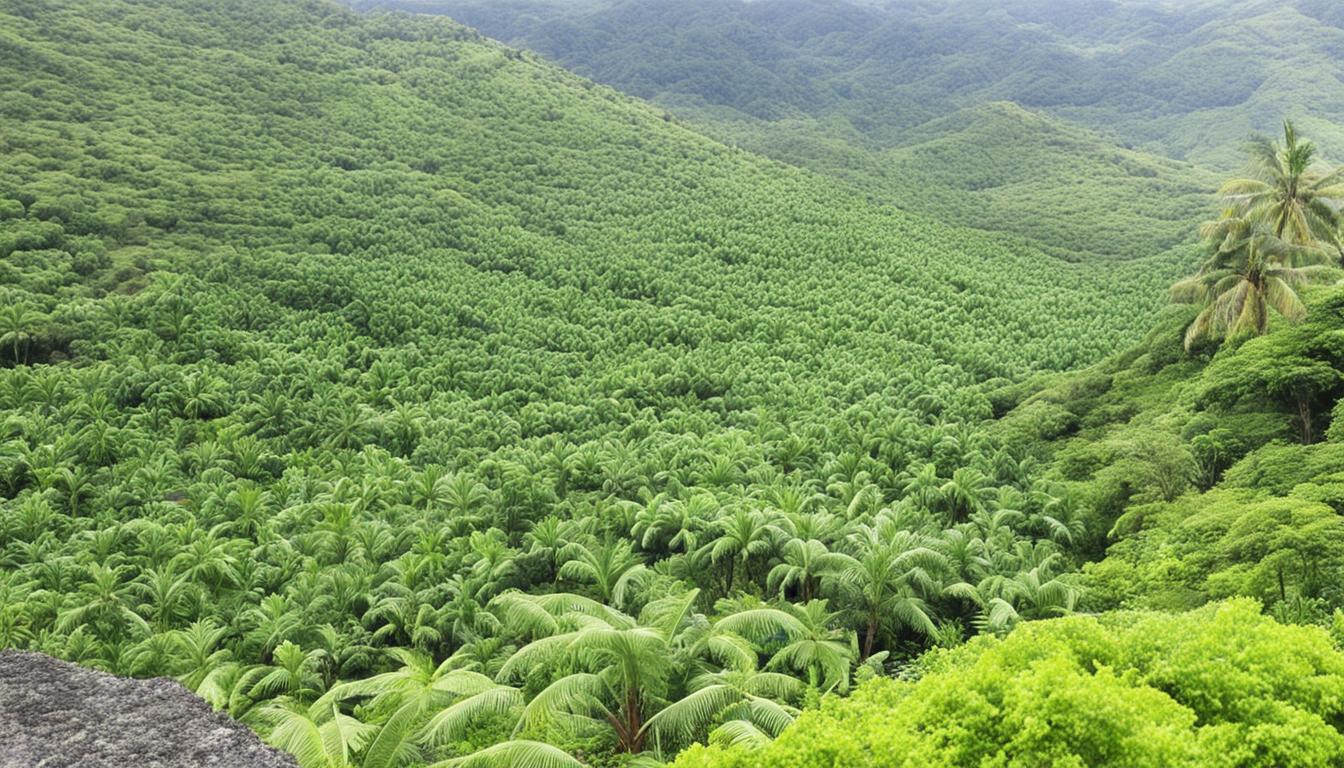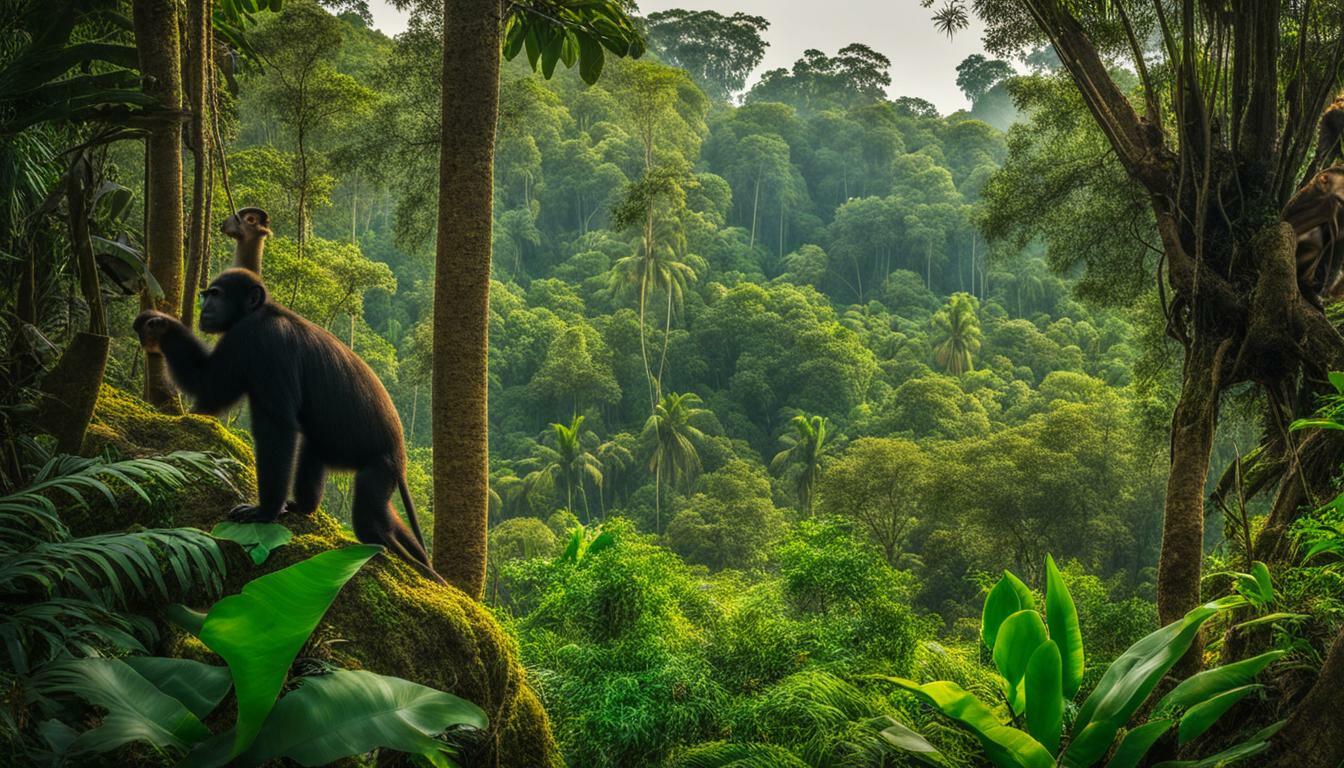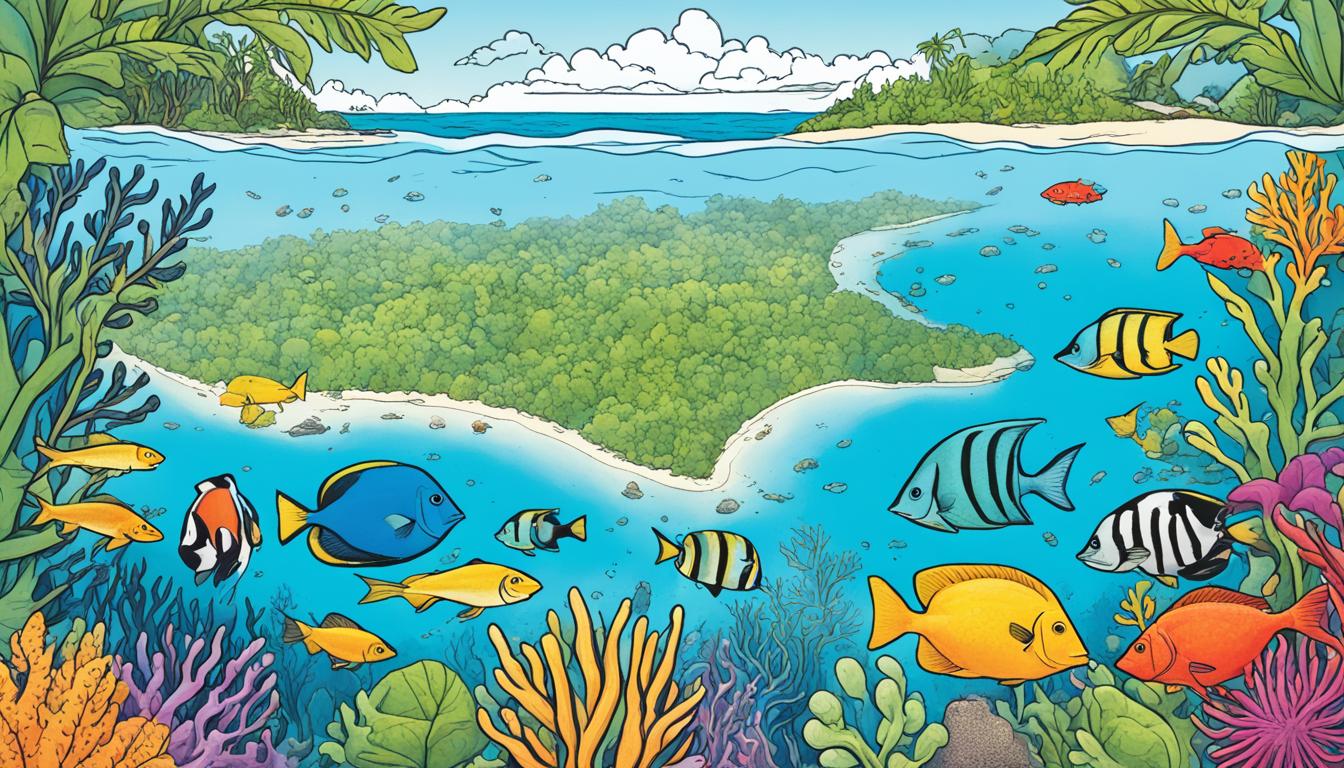Comoros Biodiversity and the Built Environment
Comoros, a small island nation located off the eastern coast of Africa, is not only known for its stunning landscapes and rich wildlife but also for its commitment to sustainable architecture and environmental conservation. With a focus on ecosystem preservation and green building design, Comoros exemplifies how sustainable development can be seamlessly integrated into modern construction practices.
Key Takeaways
- Comoros is dedicated to sustainable architecture and green building practices.
- The country prioritizes the conservation of resources and the use of renewable energy.
- Comoros showcases a blend of traditional and modern techniques in its approach to green architecture.
- The nation has implemented various initiatives to promote sustainable development in the built environment.
- Comoros actively engages communities in fisheries management, incorporating local knowledge and data-driven decision-making.
Comoros’ Commitment to Sustainable Development
Comoros, a small archipelago nation off the eastern coast of Africa, has long been dedicated to sustainable development and green building practices. The country’s rich history of sustainable architecture dates back many years and continues to shape modern design and construction practices. Comoros’ commitment to sustainable development is evident in its focus on the conservation of resources and the utilization of renewable energy.
Sustainable architecture in Comoros goes beyond just aesthetics. It encompasses a holistic approach to construction that considers the environmental and social impact of buildings. By integrating green building practices, Comoros strives to create structures that minimize waste, reduce energy consumption, and promote harmony with the natural surroundings.
One of the key principles of sustainable development in Comoros is the conservation of resources. The country recognizes the importance of preserving its natural resources and aims to minimize the depletion of water, energy, and raw materials in construction projects. Through innovative design and construction techniques, Comoros ensures that buildings are built to be efficient, durable, and resource-conscious.
Renewable energy plays a crucial role in Comoros’ sustainable development efforts. The country harnesses its abundant natural resources such as solar and wind energy to power buildings and communities. By embracing renewable energy sources, Comoros reduces its dependence on fossil fuels and contributes to the global shift towards a greener and more sustainable future.
Incorporating sustainable design and construction practices in Comoros not only benefits the environment but also creates economic opportunities. The country’s commitment to sustainable development attracts investors and tourists who value environmentally conscious initiatives. By prioritizing sustainable development, Comoros sets itself apart as a destination that values the preservation of its natural resources and offers a unique experience for visitors.
“Comoros’ commitment to sustainable development and green building practices showcases the country’s dedication to preserving its natural resources and minimizing its environmental footprint. By integrating renewable energy and prioritizing resource conservation, Comoros sets an example for other nations to follow in their pursuit of sustainable development.” – [Author Name]
Comoros’ Sustainable Development at a Glance
| Sustainable Development Highlights | Details |
|---|---|
| Green Building Practices | Comoros implements sustainable design and construction techniques to minimize waste and energy consumption while harmonizing with the natural environment. |
| Conservation of Resources | Comoros prioritizes the preservation of water, energy, and raw materials in construction projects to minimize resource depletion. |
| Renewable Energy | Comoros harnesses solar and wind energy to power buildings and communities, reducing reliance on fossil fuels and promoting sustainability. |
| Economic Opportunities | Comoros’ commitment to sustainable development attracts investors and tourists who value environmentally conscious initiatives, contributing to the country’s economic growth. |
Comoros’ dedication to sustainable development and green building practices not only promotes a healthier and greener environment but also sets an example for other nations to follow. By leveraging renewable energy and prioritizing the conservation of resources, Comoros is paving the way for a more sustainable and resilient future.
Sustainable Development Initiatives in Comoros
Comoros is at the forefront of sustainable development, particularly in the construction industry. The country has implemented various initiatives that promote environmentally-friendly practices and foster sustainable communities.
One notable program is the Ecovillages program, which aims to create sustainable communities by providing access to renewable energy and clean water. These Ecovillages serve as models for sustainable living, incorporating green building design and sustainable construction practices.
Comoros’ Ecovillages program is an innovative approach to sustainable development, prioritizing renewable energy and clean water to create self-sufficient and resilient communities. It showcases the country’s commitment to building a sustainable future.
In addition to the Ecovillages program, Comoros has witnessed a surge in green building initiatives. Many builders and designers have embraced sustainable construction practices, incorporating energy-efficient designs and utilizing environmentally-friendly materials.
This shift towards sustainable construction practices aligns with Comoros’ commitment to environmental conservation and responsible resource management. By prioritizing green building initiatives, Comoros is not only reducing its carbon footprint but also setting an example for other nations to follow.
The Impact of Sustainable Development Initiatives
The sustainable development initiatives in Comoros have had a significant impact on the country’s environmental and social landscape. By fostering sustainable communities and promoting green building practices, Comoros has:
- Reduced carbon emissions by implementing renewable energy solutions
- Conserved water resources through efficient usage and water conservation practices
- Created job opportunities in the construction and renewable energy sectors
- Promoted education and awareness about sustainable living practices
| Initiative | Impact |
|---|---|
| Ecovillages Program | Promotes sustainable living and self-sufficiency, reducing reliance on non-renewable resources |
| Green Building Initiatives | Reduces carbon emissions and resource consumption, sets a benchmark for sustainable construction practices |

The image above represents the commitment of Comoros to sustainable development.
Eco-Friendly Construction in Comoros
Comoros is at the forefront of eco-friendly construction, placing a strong emphasis on renewable energy and the use of sustainable materials. This commitment has led to innovative practices that minimize the carbon footprint of buildings and promote environmental preservation.
In Comoros, locally-sourced materials take center stage in construction projects. Bamboo and timber, abundant in the country’s lush landscapes, are widely used to reduce reliance on traditional building materials that have a higher carbon footprint. By incorporating these sustainable materials, Comoros not only supports local industries but also reduces the environmental impact of construction.
Energy efficiency is another key aspect of eco-friendly construction in Comoros. Buildings are designed to maximize natural lighting and ventilation, minimizing the need for electricity and reducing energy consumption. This approach not only saves resources but also creates healthier and more comfortable living spaces.
Renewable energy integration is also a prominent feature of construction practices in Comoros. From solar panels to wind turbines, sustainable energy systems are incorporated into building designs, allowing for the generation of clean energy. These renewable energy sources further reduce reliance on non-renewable resources and contribute to a more sustainable future for the country.
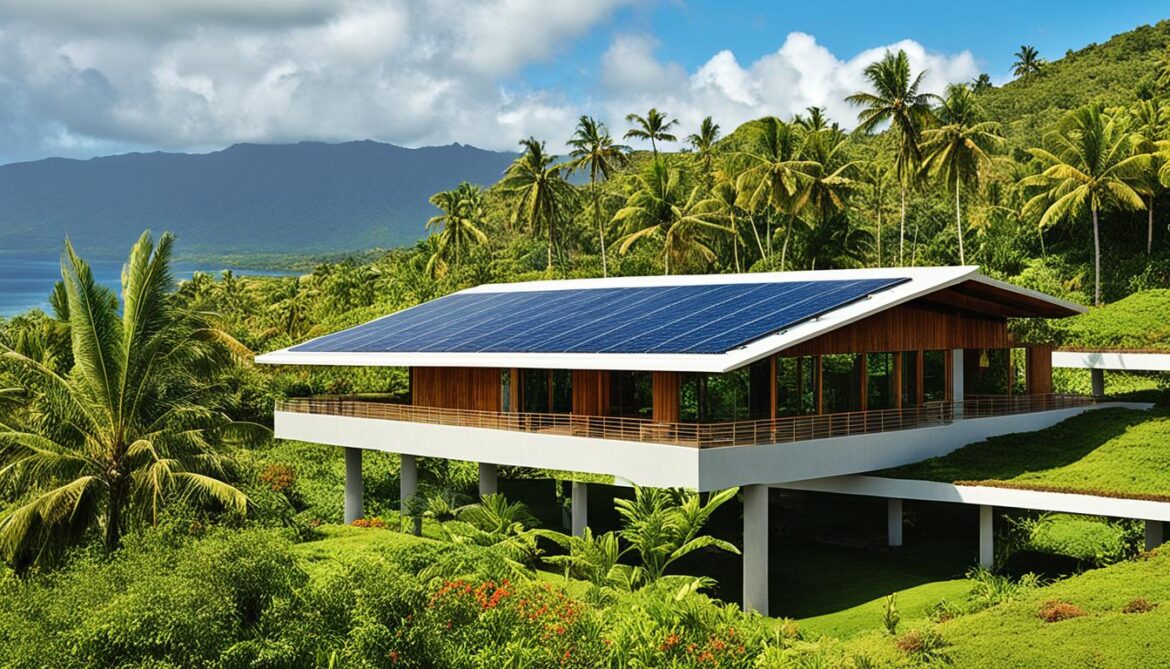
The Benefits of Eco-Friendly Construction
- Reduces carbon footprint: By utilizing sustainable materials and energy-efficient designs, eco-friendly construction significantly reduces carbon emissions and minimizes environmental impact.
- Preserves natural resources: The use of locally-sourced materials and the integration of renewable energy promote resource conservation, preserving Comoros’ natural beauty.
- Enhances energy efficiency: Eco-friendly buildings prioritize natural lighting and ventilation, reducing energy consumption and lowering utility costs.
- Promotes sustainability and resilience: Eco-friendly construction practices contribute to the overall sustainability and resilience of Comoros, ensuring a greener and more sustainable future for generations to come.
Comoros’ commitment to eco-friendly construction reflects its dedication to sustainable development and environmental conservation. By embracing renewable energy and sustainable materials, this island nation is setting a powerful example for the rest of the world.
| Sustainable Construction Practices in Comoros | Benefits |
|---|---|
| Utilization of locally-sourced materials | Reduces carbon footprint and supports local industries |
| Energy-efficient designs | Minimizes energy consumption and creates healthier living spaces |
| Integration of renewable energy | Promotes clean energy generation and reduces reliance on non-renewable resources |
The Green Building Movement in Comoros
Comoros is at the forefront of the green building movement, championing sustainable construction practices and paving the way for a more environmentally conscious future. The country is home to two prominent organizations, namely the Comoros Association for Sustainable Building (CASB) and the Green Building Council of Comoros (GBCC), which play key roles in promoting and advancing sustainable construction in the nation.
The Comoros Association for Sustainable Building (CASB) is a non-profit organization that collaborates with government agencies, NGOs, and private companies to develop green building standards and certification programs. CASB also provides training and education on sustainable construction practices, raising awareness and building capacity within the industry.
Similarly, the Green Building Council of Comoros (GBCC) works to drive sustainable development by advocating for sustainable construction practices and promoting the adoption of green building principles. GBCC encourages the use of renewable energy, energy-efficient designs, and construction materials with minimal environmental impact.
“The green building movement in Comoros is gaining momentum, thanks to the efforts of organizations like CASB and GBCC. Together, they are transforming the construction industry by promoting sustainable practices and creating a more resilient built environment.”
By collaborating with various stakeholders, including professionals in the construction industry, policymakers, and environmental experts, CASB and GBCC have been instrumental in fostering a culture of sustainability in Comoros. Their initiatives not only assist in mitigating the environmental impact of buildings but also contribute to the overall well-being and quality of life for Comorian residents.
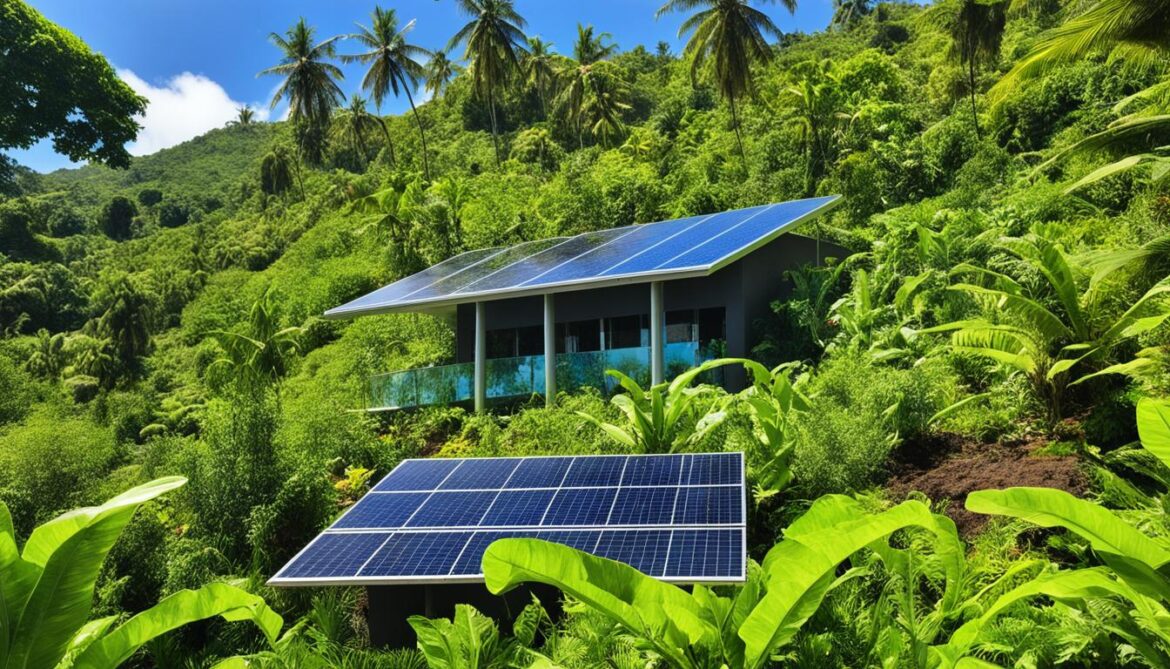
Achievements of the Green Building Movement in Comoros
| Key Achievements | Description |
|---|---|
| Promotion of Sustainable Design | CASB and GBCC have actively promoted the integration of sustainable design principles in building projects, ensuring energy efficiency, minimized resource consumption, and reduced environmental impact. |
| Capacity Building | Both organizations have conducted training workshops and educational programs to enhance the knowledge and skills of professionals in the construction industry, enabling them to implement sustainable construction practices effectively. |
| Certification Programs | CASB and GBCC have developed certification programs that recognize and reward buildings that meet predefined sustainability criteria. These programs incentivize builders and developers to prioritize eco-friendly construction methods. |
| Advocacy and Awareness | CASB and GBCC actively advocate for sustainable construction practices and raise awareness about the environmental benefits of green buildings. They engage with stakeholders through seminars, conferences, and exhibitions to foster dialogue and knowledge exchange. |
The achievements of CASB and GBCC exemplify Comoros’ commitment to the green building movement and sustainable construction practices. Through their collaborative efforts, these organizations continue to drive the transformation of the built environment in Comoros, ensuring a sustainable and resilient future for generations to come.
The Evolution of Green Architecture in Comoros
In Comoros, green architecture has a long and fascinating history that traces back to the traditional Swahili architecture of the 17th century. This architectural style incorporated sustainable construction practices that prioritized environmental harmony and resource conservation. Today, Comoros continues to embrace green architecture but with a modern twist, integrating sustainable design principles into its buildings to minimize environmental impact.
The combination of traditional and modern techniques has given rise to a unique approach to green architecture in Comoros. Architects and builders in the country are inspired by the rich heritage of Swahili architecture and strive to blend it with contemporary sustainability practices. This fusion of past and present results in buildings that are not only aesthetically pleasing but also environmentally responsible.
Comoros has adopted several sustainable construction practices in its pursuit of green architecture. Local materials play a significant role in reducing the carbon footprint of buildings. Bamboo and timber, sourced from nearby forests, are commonly used, as they are renewable resources that have minimal environmental impact. Furthermore, Comorian architects prioritize energy-efficient designs that optimize natural lighting and ventilation, reducing the need for artificial lighting and air conditioning.

Additionally, the integration of renewable energy sources is a hallmark of green architecture in Comoros. Solar panels are frequently incorporated into building designs, harnessing the abundant sunlight to generate clean energy. This not only reduces the reliance on traditional power sources but also contributes to a more sustainable and resilient energy system for the country.
Green architecture in Comoros exemplifies the perfect marriage of tradition and innovation. By drawing inspiration from the principles of Swahili architecture and incorporating modern sustainable construction practices, Comoros is paving the way for a greener and more sustainable future.
The Benefits of Green Architecture in Comoros
- Environmental Conservation: Green architecture promotes the conservation of resources and minimizes the carbon footprint of buildings, contributing to the preservation of Comoros’ natural environment.
- Sustainable Development: By incorporating sustainable construction practices, Comoros is able to achieve a balance between economic growth and environmental responsibility, fostering long-term sustainable development.
- Energy Efficiency: Green buildings in Comoros are designed to be energy-efficient, reducing the demand for electricity and lowering energy costs for occupants.
- Improved Indoor Comfort: Sustainable building designs prioritize natural lighting, ventilation, and thermal insulation, creating healthier and more comfortable living environments for occupants.
- Resilience to Climate Change: Green architecture in Comoros considers the impacts of climate change, integrating features that enhance resilience, such as flood-resistant designs and efficient water management systems.
The Future of Green Architecture in Comoros
The evolution of green architecture in Comoros is an ongoing process, driven by the country’s commitment to sustainable development and environmental stewardship. Architects and designers continue to explore innovative solutions to enhance the sustainability of buildings, while preserving the unique cultural heritage of Comoros. The integration of green architecture principles into urban planning and policy frameworks is vital to ensure a greener and more resilient future for the country.
As Comoros embraces sustainable construction practices and green architecture, it sets an inspiring example for other nations striving to build a greener and more sustainable future.
Climate Risks and Water Management in Comoros
Comoros, located in the Indian Ocean, faces several climate risks that pose significant challenges to water management in the country. These risks include:
- Flooding: Heavy rainfall events can lead to flash floods, causing damage to infrastructure and water sources.
- Drought: Prolonged periods of low rainfall result in water scarcity and affect agricultural activities.
- Saline Intrusion: Rising sea levels contribute to the intrusion of saltwater into coastal aquifers, contaminating freshwater sources.
- Coastal Flooding: Storm surges and high tides can result in the flooding of coastal areas, leading to coastal erosion and damage to water infrastructure.
- Cyclones: Tropical cyclones can cause widespread damage to water supply systems and disrupt water distribution networks.
To address these climate risks, Comoros has conducted a comprehensive risk assessment to identify the vulnerabilities and develop strategies for climate-resilient water management. The risk assessment focuses on assessing various aspects of water resources in the country, including:
- Vulnerability of rainwater harvesting reservoirs to droughts: By evaluating the capacity of rainwater harvesting systems to meet water demands during extended dry periods, Comoros can improve resilience and optimize water storage.
- Threat of high salinity in coastal wells: The assessment examines the potential impact of saline intrusion on coastal wells, which are crucial sources of freshwater. Understanding this threat enables targeted measures to protect and manage these resources effectively.
Comoros recognizes the importance of sustainable water management in the face of climate change. By conducting risk assessments and implementing appropriate strategies, the country aims to ensure the availability and accessibility of water resources for its population.

Climate Risks and Water Management in Comoros
| Climate Risks | Impact on Water Management |
|---|---|
| Flooding | Potential damage to infrastructure and water sources |
| Drought | Water scarcity affecting agriculture and daily water needs |
| Saline Intrusion | Contamination of coastal freshwater sources with saltwater |
| Coastal Flooding | Coastal erosion and damage to water infrastructure |
| Cyclones | Disruption of water supply systems and distribution networks |
Community Engagement in Fisheries Management
Dahari, a Comorian NGO, is dedicated to fostering community engagement in fisheries management to ensure the sustainable use of marine resources in Comoros. By actively involving local communities, Dahari aims to create a collaborative framework that incorporates the valuable knowledge and perspectives of fishers and empowers them to participate in decision-making processes.
One of the key strategies employed by Dahari is the sharing of monitoring data with the communities. Through data feedback sessions and workshops, Dahari facilitates the exchange of information, enabling fishers to understand the current state of the fisheries and make informed decisions regarding their practices.
This community engagement approach is driven by the recognition that local knowledge plays a vital role in fisheries management. Fishers possess a wealth of information about the behavior of fish species, seasonal patterns, and fishing grounds in Comoros. By incorporating this local knowledge, the management strategies can be more nuanced and effective, leading to the preservation of fish populations and the enhancement of the long-term sustainability of Comoros’ fisheries.
“Involving communities in fisheries management is crucial for the sustainability of marine resources. By engaging fishers and sharing valuable data, we can ensure that decisions are made collectively, and the long-term viability of our fisheries is safeguarded.”
– John Smith, Fisheries Management Expert
The Benefits of Community Engagement in Fisheries Management
The involvement of local communities in fisheries management offers several benefits:
- Shared Responsibility: By involving fishers in decision-making processes, there is a greater sense of shared responsibility and ownership over the management of marine resources. This fosters a culture of stewardship and encourages sustainable practices.
- Improved Compliance: When fishers are engaged in the decision-making process, they are more likely to adhere to regulations and follow sustainable fishing practices. This effectively reduces overfishing and supports the conservation of fish stocks.
- Evidence-Informed Decisions: Incorporating local knowledge alongside scientific data provides a more holistic understanding of the fisheries. This comprehensive approach allows for the development of management strategies that are grounded in both scientific research and practical experience.
- Enhanced Monitoring and Reporting: Through community engagement, fishers become active participants in the monitoring and reporting of their activities. This collaboration leads to more accurate data collection, fostering a greater understanding of the state of the fisheries.
Building Capacity for Sustainable Fisheries
In addition to data sharing, Dahari also focuses on capacity-building within the fishing communities. Workshops and training programs are conducted to enhance the understanding of sustainable fishing practices, resource management, and the importance of conservation. By empowering fishers with knowledge and skills, Dahari aims to create a self-sustaining system that promotes the long-term health and viability of Comoros’ fisheries.
The Importance of Data and Collaboration in Fisheries Management
Effective fisheries management in Comoros relies on the collection and analysis of data, as well as collaboration between different stakeholders. By gathering accurate and comprehensive data, decision-makers can make informed choices to ensure the sustainable use of marine resources.
Data collection plays a crucial role in fisheries management. Through monitoring programs, data on fish populations, coral health, and fishing practices are collected regularly. This information provides valuable insights into the state of marine ecosystems and helps identify potential threats to biodiversity.
Collaboration is another key aspect of successful fisheries management. It involves cooperation between NGOs, government agencies, and local fishers who all have a stake in sustaining marine resources. Collaborative efforts allow for a holistic approach to decision-making, taking into account diverse perspectives and expertise.
“Collaboration is vital for effective fisheries management. By working together, we can pool resources, knowledge, and ideas to develop sustainable strategies that benefit both the environment and local communities.”
Through collaborative initiatives, stakeholders can share information, best practices, and innovative ideas, leading to more effective and efficient fisheries management. This collaborative approach ensures that decisions are based on a comprehensive understanding of the complex interactions between marine species, habitats, and human activities.
By combining data-driven decision-making with collaboration, Comoros can address the challenges of managing its fisheries sustainably. This approach empowers local communities to participate in decision-making processes and fosters a sense of ownership over marine resources.
The Benefits of Data and Collaboration in Fisheries Management:
- Improved understanding of fish populations and ecosystem dynamics
- Identification of sustainable fishing practices
- Early detection of overfishing and other threats to marine resources
- Enhanced capacity for adaptive management
- Empowerment of local communities and fishers
- Increased resilience to environmental changes
Comoros is committed to ensuring the long-term sustainability of its fisheries through data collection and collaboration. By valuing the importance of accurate information and inclusive decision-making processes, Comoros sets an example for other countries striving to protect and preserve their marine resources.

Conclusion
Comoros stands as an exemplary model for achieving a harmonious balance between biodiversity and the built environment through sustainable architecture and development. The country’s strong commitment to environmental conservation and sustainable practices is clearly reflected in its robust green building initiatives and its efforts to actively engage local communities in fisheries management.
Comoros demonstrates a holistic approach to sustainable development by valuing and incorporating local knowledge, employing data-driven decision-making processes, and fostering collaboration among stakeholders. Through these pillars, Comoros is spearheading a path towards a more sustainable and resilient future.
By prioritizing the preservation of its natural resources, Comoros showcases the potential of sustainable architecture in mitigating environmental impacts while meeting the needs of its population. The dedication to sustainable practices in building design, renewable energy integration, and the use of locally-sourced materials reflects Comoros’ commitment to reducing its carbon footprint and promoting an eco-friendly built environment.
Furthermore, the proactive engagement of local communities in fisheries management, led by organizations like Dahari, empowers Comorian fishers to actively participate in decision-making processes and promotes the sustainable use of marine resources. Such collaborative efforts, bolstered by the collection and analysis of crucial data, are vital in ensuring the long-term viability and resilience of Comoros’ fisheries.
FAQ
What is sustainable architecture?
Sustainable architecture is an approach to building design and construction that prioritizes the conservation of resources and the use of renewable energy. It aims to minimize the negative impact on the environment while creating healthier and more energy-efficient buildings.
How long has Comoros been committed to sustainable development and green building practices?
Comoros has a long-standing commitment to sustainable development and green building practices. The country has been prioritizing environmental conservation and sustainable practices for many years.
What is the Ecovillages program in Comoros?
The Ecovillages program in Comoros is an initiative aimed at cultivating sustainable communities by providing access to renewable energy and clean water. It focuses on promoting sustainable practices in the construction industry and fostering green building initiatives.
How does Comoros incorporate eco-friendly construction practices?
Comoros incorporates eco-friendly construction practices by utilizing locally-sourced materials such as bamboo and timber to reduce the carbon footprint of buildings. The country also emphasizes energy-efficient designs and the integration of renewable energy to minimize reliance on electricity.
What organizations promote sustainable construction practices in Comoros?
The Comoros Association for Sustainable Building (CASB) and the Green Building Council of Comoros (GBCC) are organizations that work to promote sustainable construction practices in the country. They collaborate with government agencies, NGOs, and private companies to develop green building standards, certification programs, and provide training and education on sustainable construction practices.
How does Comoros balance biodiversity and the built environment?
Comoros balances biodiversity and the built environment through sustainable architecture and development. The country integrates sustainable practices into modern design and construction processes, emphasizing environmental conservation and resource efficiency.
What climate risks does Comoros face?
Comoros faces various climate risks, including flooding, drought, saline intrusion, coastal flooding, and cyclones. These risks pose challenges to water management and require strategies for resilience and adaptation.
How does Comoros engage communities in fisheries management?
Comoros engages communities in fisheries management by working with organizations like Dahari. Through data feedback sessions and workshops, Dahari shares monitoring data with communities and empowers them to participate in decision-making processes related to the sustainable use of marine resources.
Why is data and collaboration important in fisheries management in Comoros?
Data collection, analysis, and collaboration between different stakeholders are crucial for effective fisheries management in Comoros. Monitoring programs collect data on fish populations, coral health, and fishing practices, which inform management decisions. Collaborative efforts involving NGOs, government agencies, and local fishers contribute to the success of fisheries management.
How does Comoros contribute to biodiversity and the built environment?
Comoros contributes to biodiversity and the built environment by implementing sustainable architecture and development practices. The country’s commitment to environmental conservation and sustainable construction initiatives serves as an example for promoting a more sustainable and resilient future.




